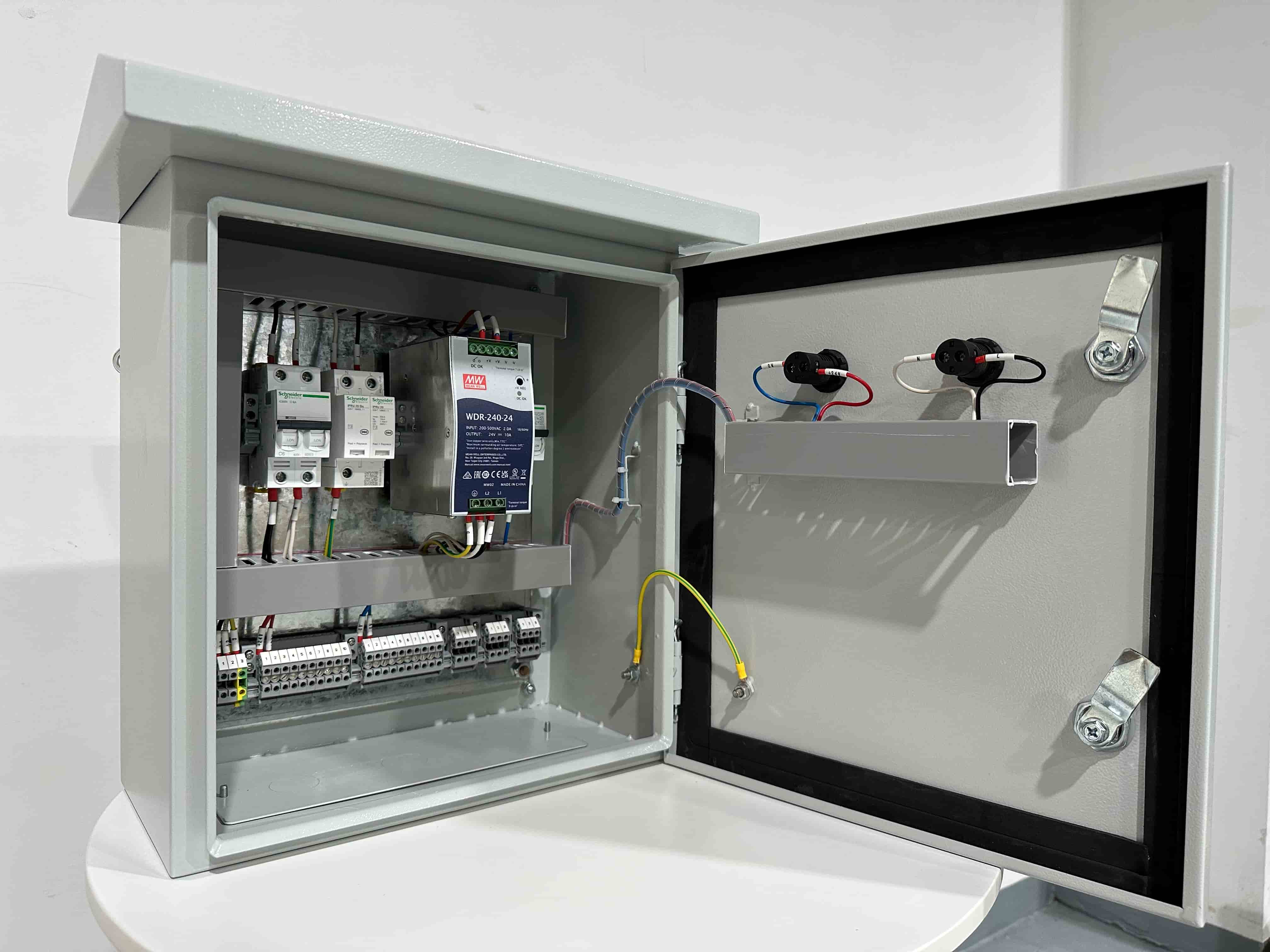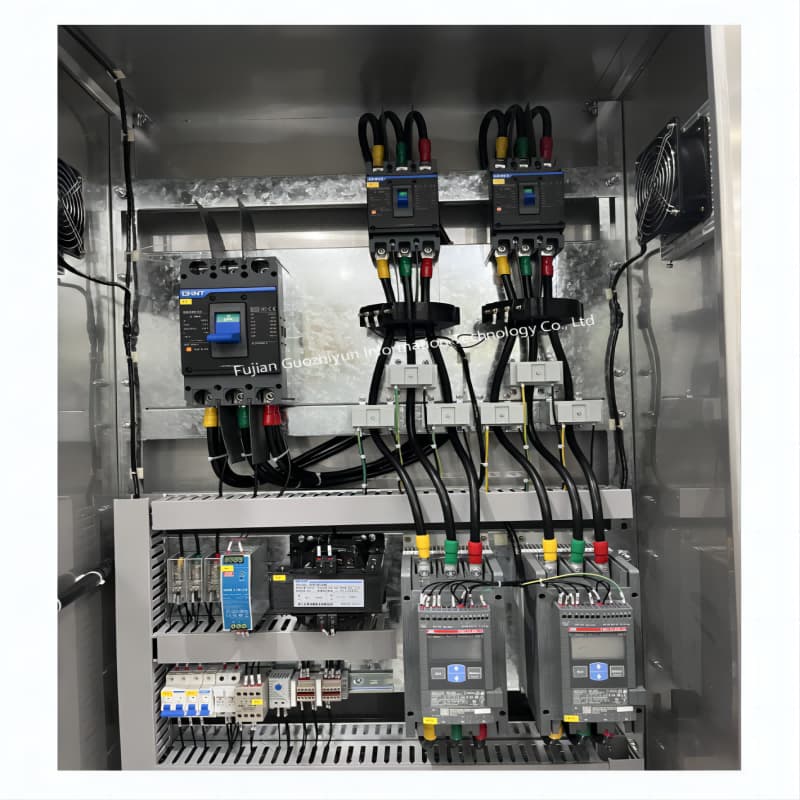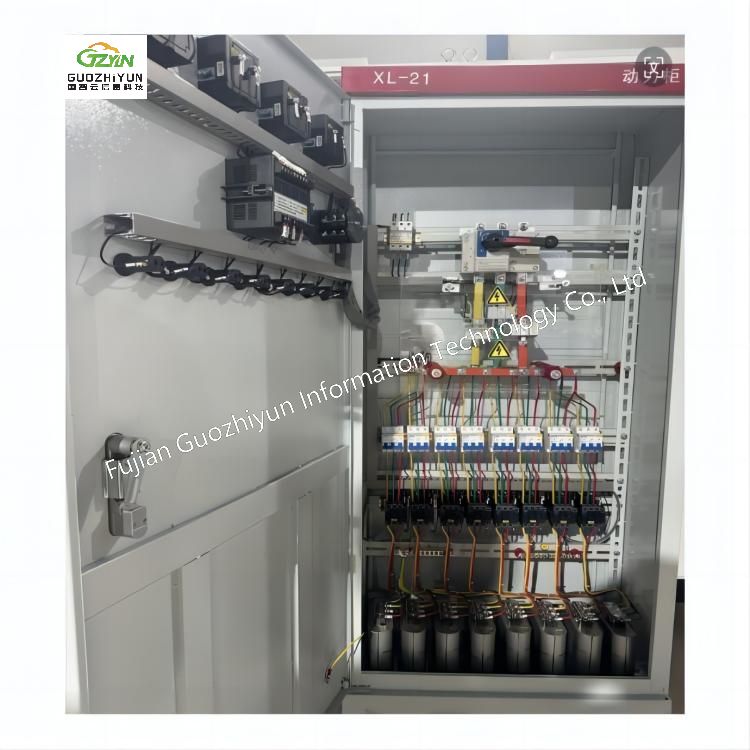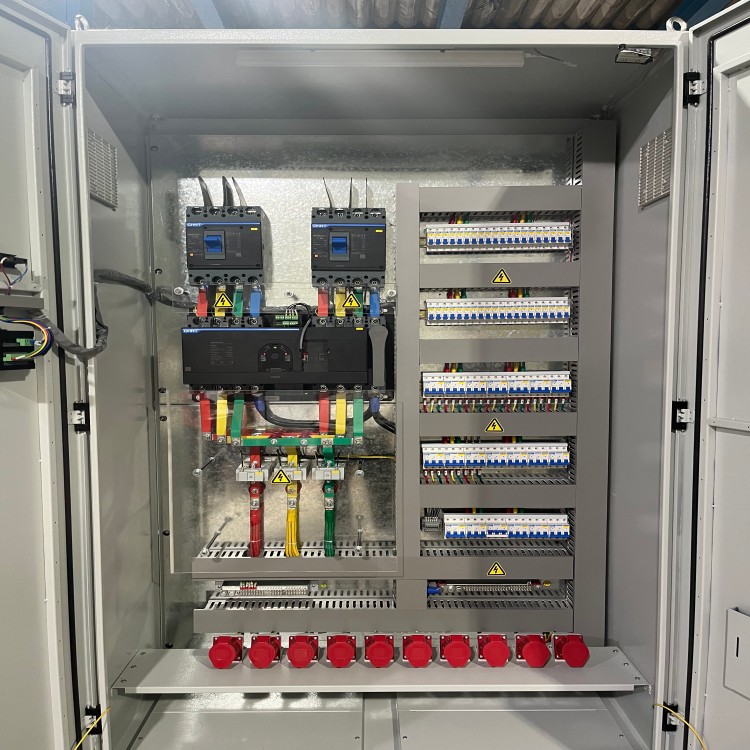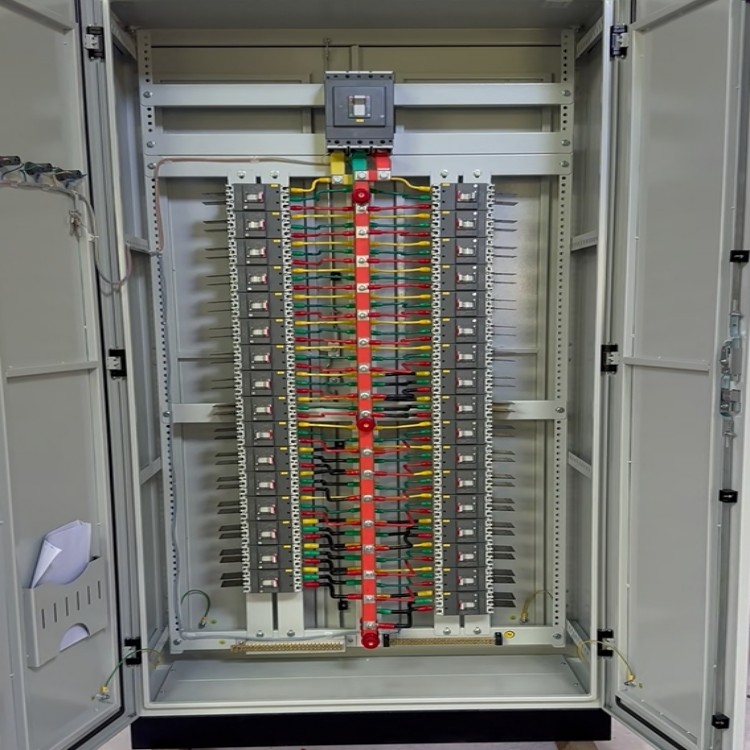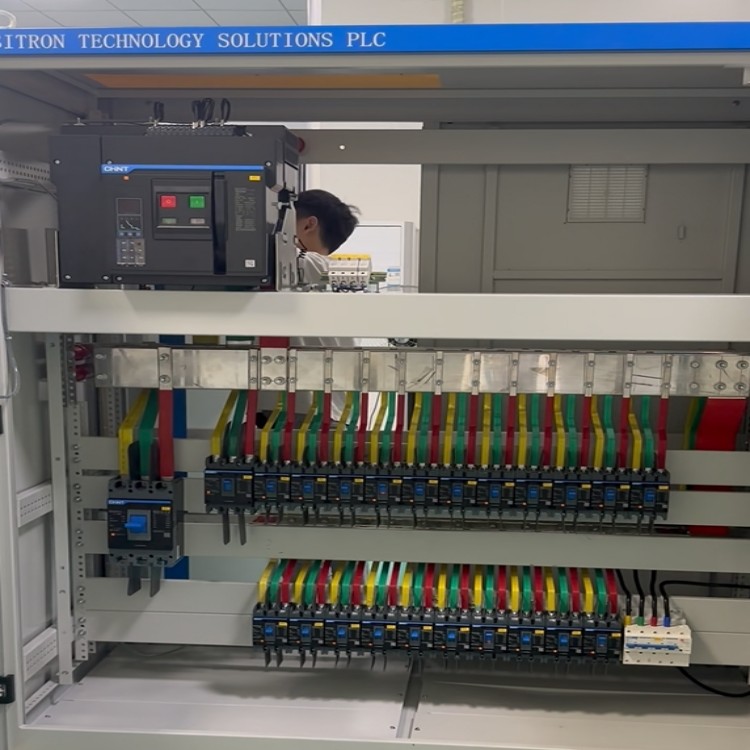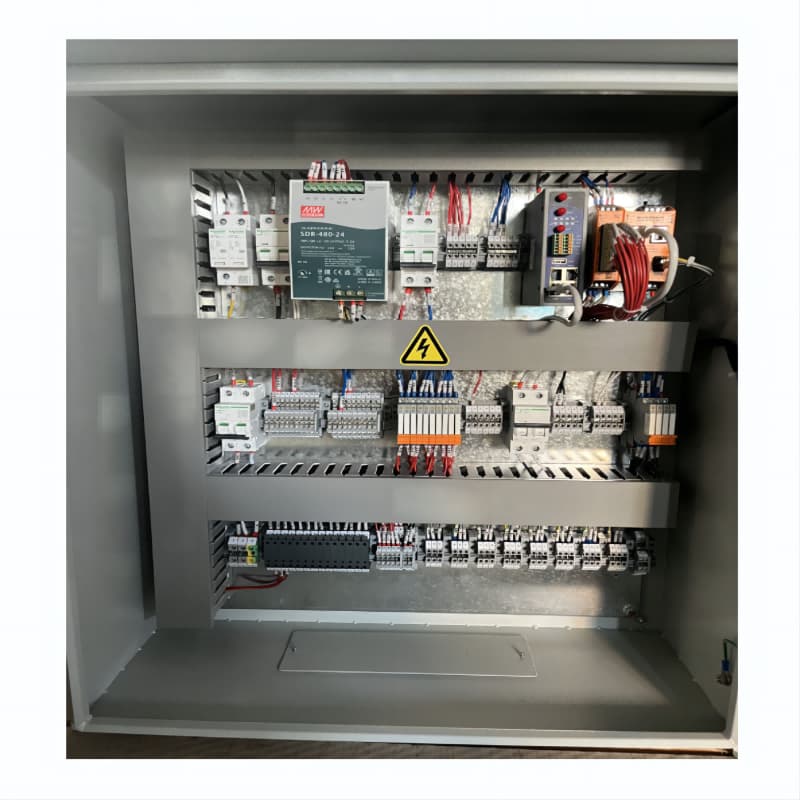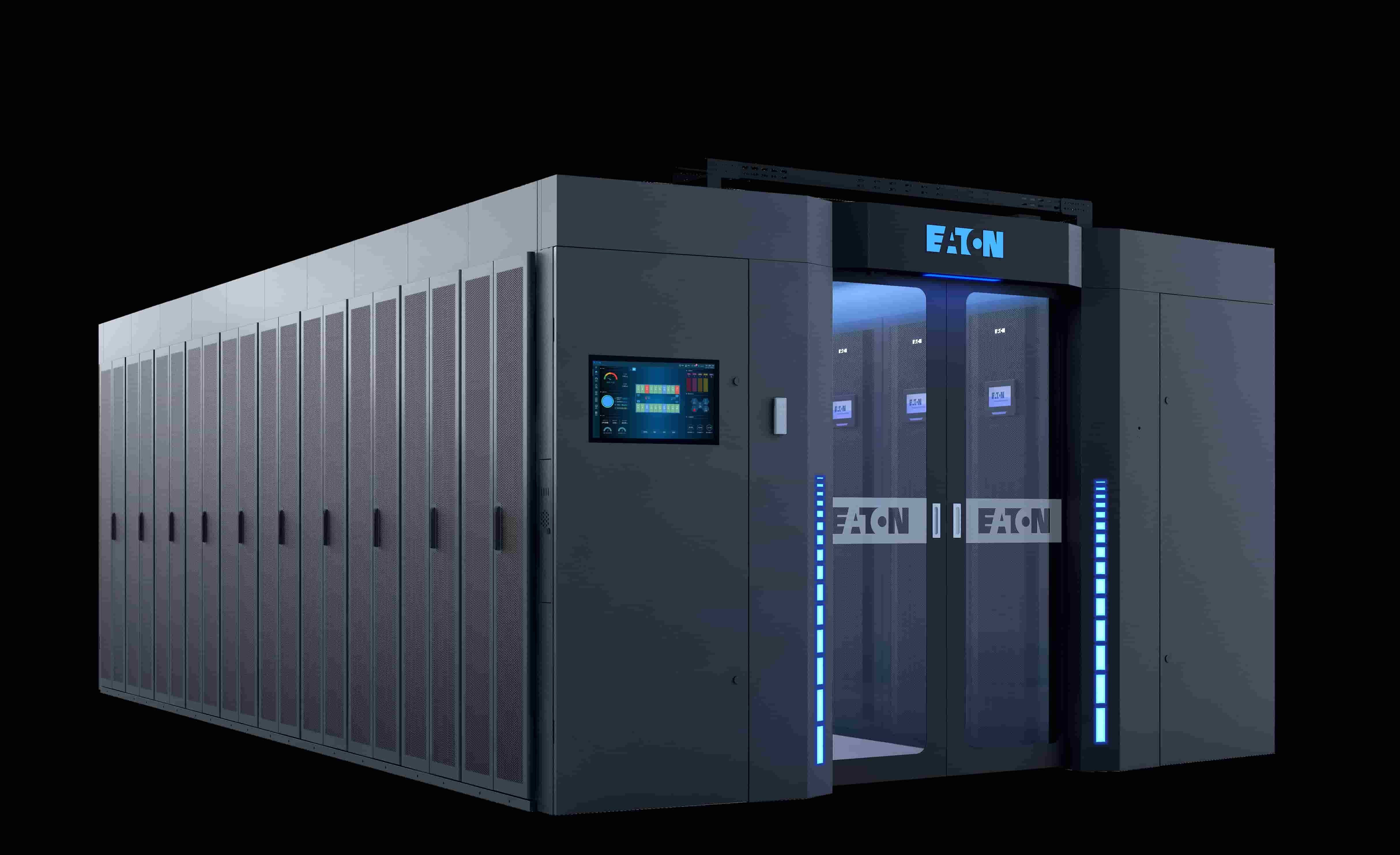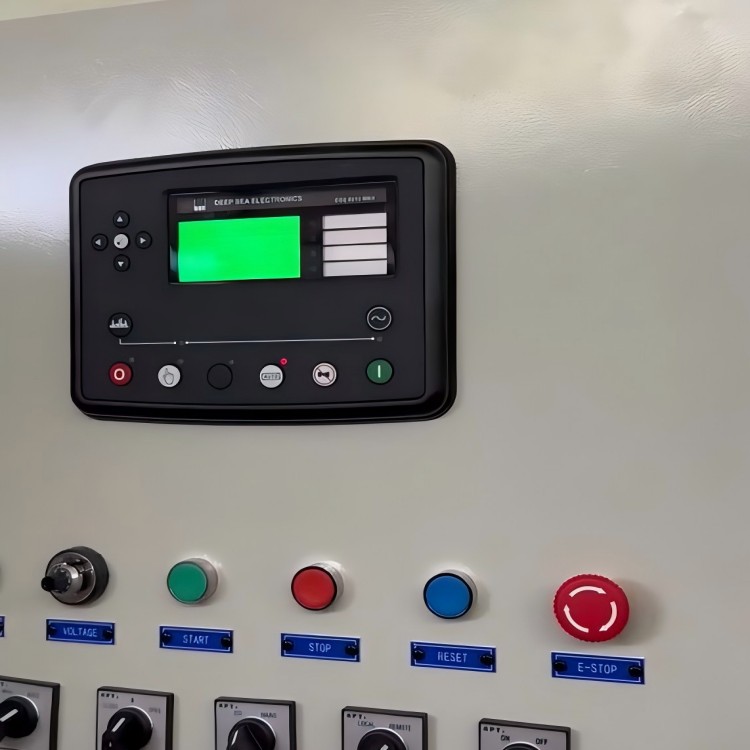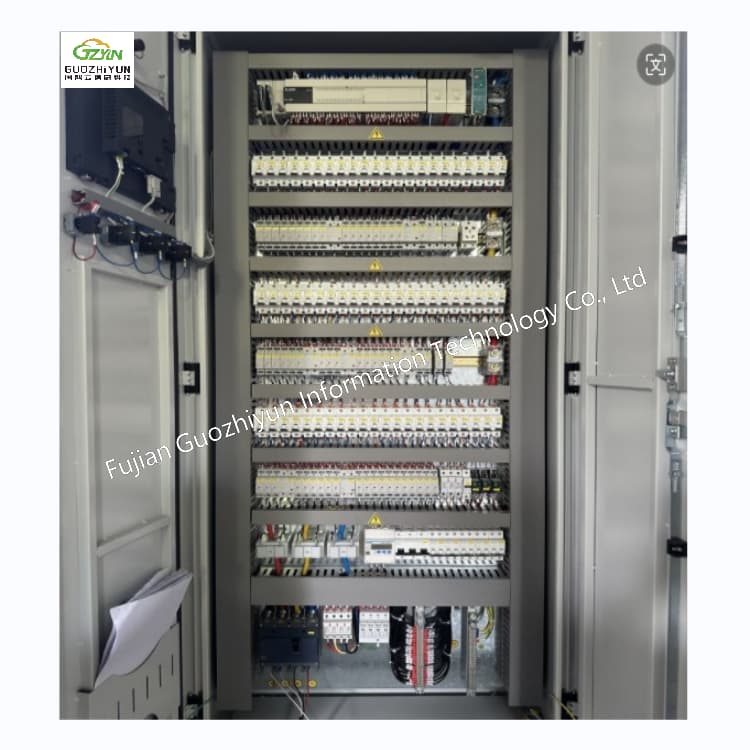Electrical control cabinet related knowledge
Aug 29, 2024
An electrical control cabinet is a cabinet used to centrally install components and equipment of an electrical control system, mainly used to start, control and monitor industrial machinery or systems.
1.Structure and design:
Housing: Usually made of metal, with high strength and good sealing, protecting internal components from physical damage and environmental impact.
Door: Designed to be removable and equipped with a transparent observation window for easy monitoring of operating status.
Ventilation: Equipped with fans or vents to ensure heat dissipation of internal components and maintain normal operating temperature.
Compartment: The internal space is divided into different functional areas, such as power area, control area, wiring area, etc., to optimize layout and facilitate maintenance.
2. Internal components
Controllers: Such as PLC (Programmable Logic Controller), industrial computers or relay boards, acting as the brain of the system and executing control instructions.
Drivers: Including inverters and servo drives, used to accurately control the speed and torque of the motor.
Instruments: Such as voltmeters, ammeters and pressure gauges, used to display system operating parameters in real time.
Circuit breakers and protection: Provide overload protection, short circuit protection, and ensure system safety.
Terminal blocks and connectors: Used to connect and distribute power and signals, ensuring neat and reliable wiring.
3. Functions and Applications
Control function: realize the control of motor start and stop, speed adjustment, running direction, etc.
Monitoring function: collect system operation data through sensors for real-time monitoring.
Protection function: prevent electrical accidents through relay protection and other automatic devices.
Communication function: connect with the upper system or network through industrial communication protocol to realize data exchange and remote monitoring.
4. Application areas
It is widely used in automated factories, water treatment facilities, food processing, chemical production, machinery manufacturing and other industries.
5. Notes
Environmental requirements: Select the appropriate model and protection level according to environmental conditions (such as temperature, humidity, vibration).
Safety: Must comply with relevant international and domestic safety standards.
Maintenance: Regular inspection and maintenance to ensure long-term stable operation.
